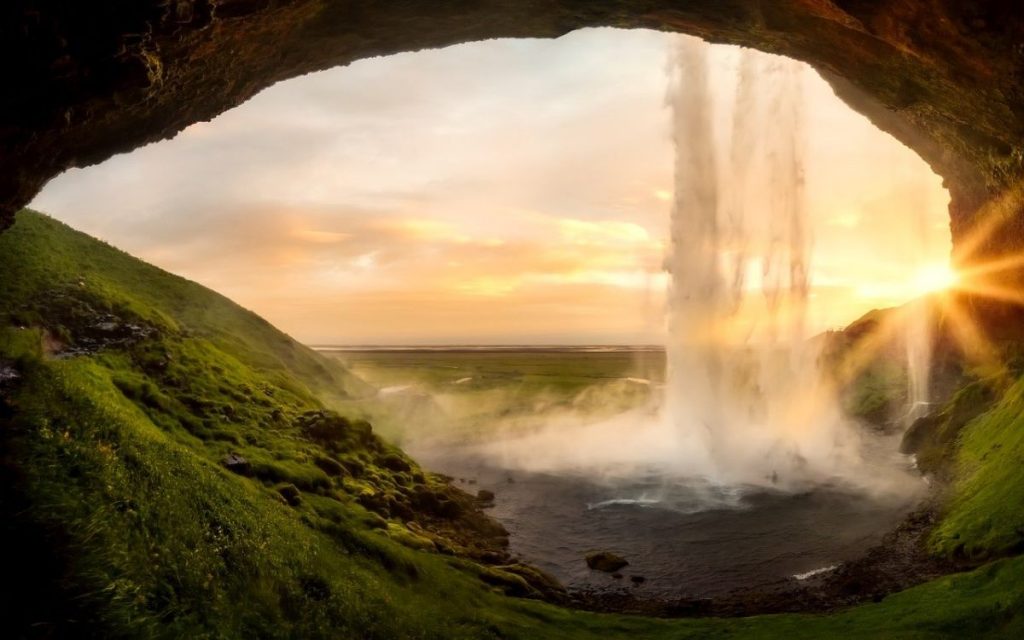Why South Coast Iceland? Iceland has a mind-blowing landscape, which offers plenty of opportunities for exploring. “Europe’s open-air adventure park” is known to push limits and make people rethink their notion of a “comfortable escape”. Although the country is beautiful all around, the South Coast is more accessible and generally more tourist friendly than North Iceland.
During our one-year stay in the country, we were lucky to experience some of the best adventures and Iceland day tours, once-in-a-life-time experiences that brought us closer to respecting this pristine land and its unworldly beauty. If you are one of the many travelers who start visiting Iceland in Reykjavik and then head South until Höfn, this list is for you. Without further ado, here are 10 adventure travel experiences to try out while visiting the South of Iceland:
#1. Whale watching Reykjavik
If you are planning to stay in Reykjavik, be sure not to miss the meeting with the largest creatures on Earth, the lovely whales. The summer season (1 April – 31 October) is most suited for whale watching in Iceland, as the wildlife in the bay is at it’s highest peak! This is the time when the Minke whales are always around, along with the White-beaked dolphins, Harbour porpoises and the sumptuous Humpback whales. Even if they appear very rarely near the shores of Reykjavik, the Blue whales may also flip in front of your eyes.
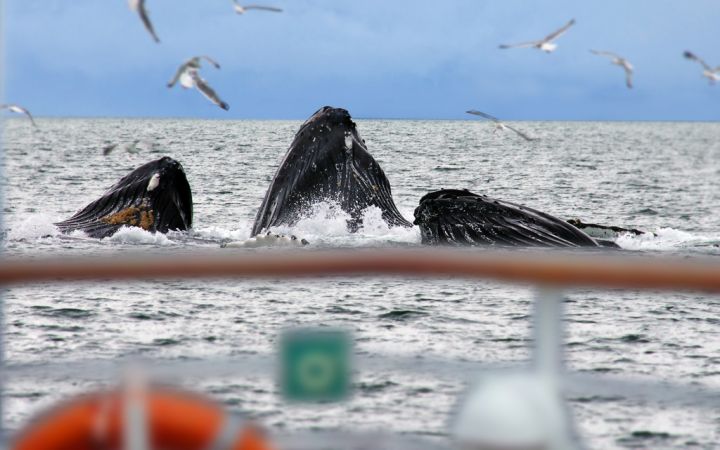
The whale watching Reykjavik tours start in the Old Harbour in downtown Reykjavik and most of them are focused mainly on the southern part of Faxaflói bay, just off the capital. The average Iceland whale watching tour cost is around 100 Euros and it usually lasts 3 hours. If you happen to head out North, Husavik (one hour East of Akureyri) is another great spot for whale watching.
#2. Diving between two continents in Thingvellir National Park
Wildlife-filled trips are not just the tip of the iceberg when it comes to visiting an adventurous country. Located 40 km from Reykjavik, Thingvellir National Park is a fantastic place for a snorkeling adventure. The Silfra fissure (the divergent tectonic boundary between the North American and Eurasian plates) is considered one of Iceland’s most alluring snorkeling spots and is located right in the heart of the national park.
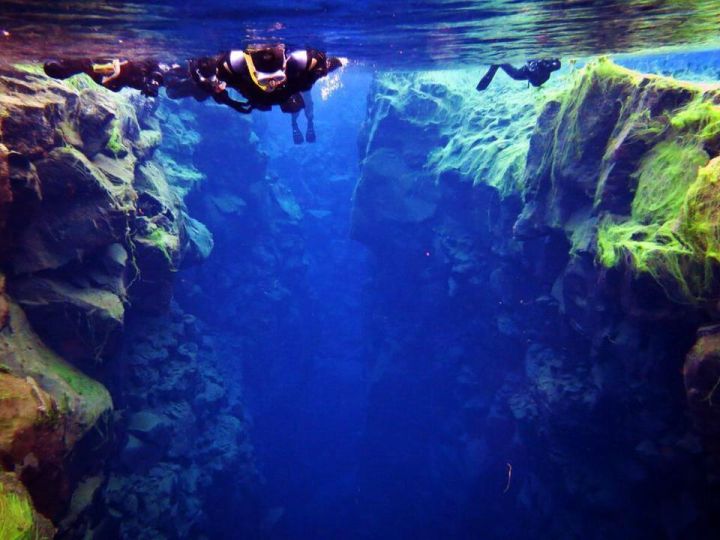
Upon arrival at Silfra, you will receive a dry suit and snorkeling equipment. The snorkeling tour takes around 40 minute and explores the four main sections of Silfra. The highlight is floating through the Big Crack, Silfra’s narrowest section and where the continental plates are so incredibly close.
There is no need for a diver certificate to do snorkeling in Silfra, so it is accessible to anyone who feels comfortable under water. Diving costs are around 140 euros and include all equipment and transportation to the lake.
#3. Relaxing in the hot river above Hveragerdi
Probably the most striking “feature” of the small Icelandic town of Hveragerdi is the hot river that crosses the valley. It is called “Varmá”, and as its name suggests, it is very, very warm.
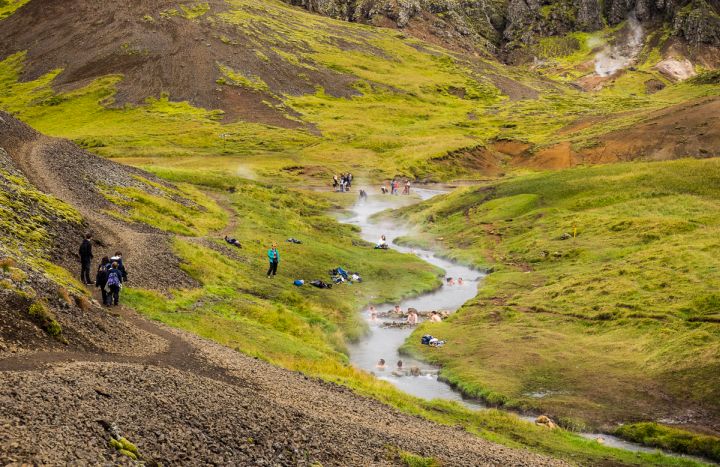
Getting to the bathing spot requires a one-hour hike through green-moss valleys and various-sized geysers. A map from the gas station or tourist office should be of great help.
The river is a once-in-a-lifetime sight, but wait till you bathe in it! Its waters are fine any time of year (even though trying them out during the midnight sun is best). The hot river of Hveragerdi must have about 40°C, or at least this was our feeling. We covered more details about this hot river in Iceland (which for us is honestly a better option than the Blue Lagoon Reykjavik) in a previous post and you can go here for more accommodation options in Hveragerði.
#4. Hiking in Iceland through the colorful highlands of Landmannalaugar
The best way to explore Landmannalaugar is to follow the Laugavegur trail from the hot springs area, where the main campsite is located, to the glacial valley of Thorsmork. The area is famous for its wide variety of landscapes along a fantastic 55 km trail.
The route is typically completed in 2–4 days with potential stops at the mountain huts at Hrafntinnusker, Álftavatn, Hvanngil and Emstrur. It is also possible to combine the trail with the Fimmvörðuháls route which goes over the pass from Þórsmörk to Skógar for an additional 25 km hike (which you can do in one or two days). Landmannalaugar is reachable by bus or 4X4 cars during the summer.
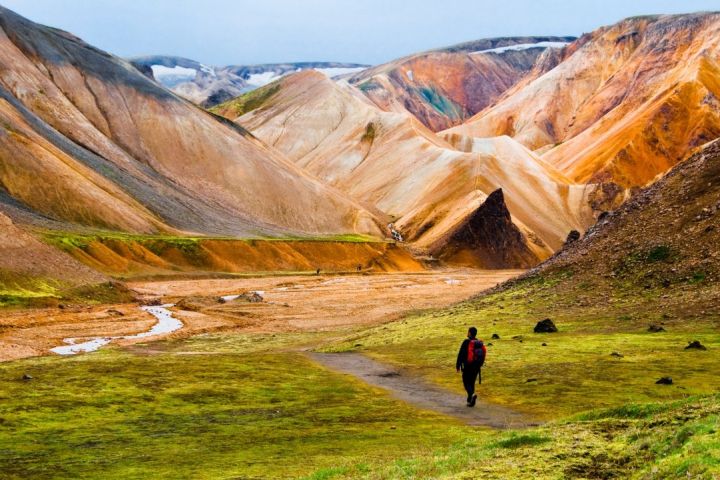
The Laugavegur is probably the most walked trekking route in the whole country, therefore the huts are in high demand during the summer. If you intend to spend the nights in huts, we recommend booking a few months in advance. The alternative is to camp in the special places along the way.
#5. Hiking the Fimmvorduhals trail between Eyjafjallajökull and Myrdalsjokul Glacier
The Fimmvörðuháls hiking trail (24 – 30 km) between Skógar and Þórsmörk is one of the most famous trails in Iceland and offers a challenging trek in versatile terrain, with beautiful views over the South Coast of Iceland and the Þórsmörk Nature Reserve. The trail leads you over the Fimmvörðuháls pass, between the Eyjafjallajökull and Mýrdalsjökull ice caps, then down the other side to Þórsmörk and traverses the new lava fields from the 2010 eruption at Eyjafjallajökull.
In our opinion, it is better to ascend from Skógar, as the trail gets more difficult in the last part towards Þórsmörk.
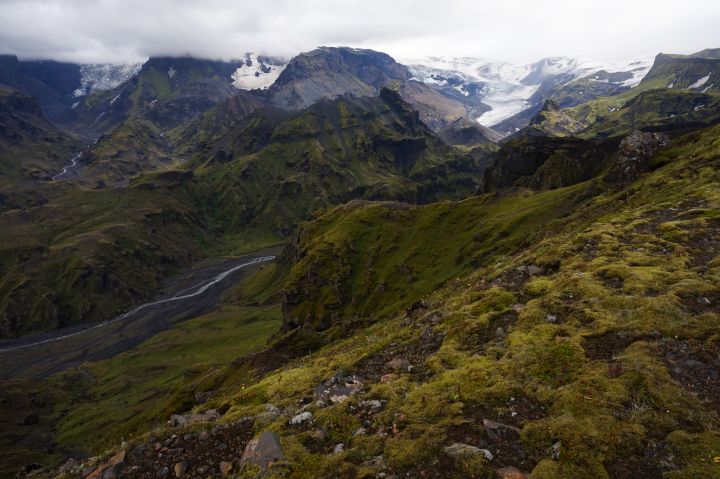
The experienced hikers finish the Skogar- Thorsmork trail in one day, in 8-10 hours, while others spread the trip over two days, sleeping at one of the two mountain huts along the trail. The huts are small and booking well ahead of time is recommended. The trail is usually passable from around mid-June to September.
#6. Swimming under a volcano in Seljavallalaug, Iceland’s “secret pool”
Seljavallalaug is a protected 25-meter outdoor pool in southern Iceland. The pool is one of the oldest swimming pools in Iceland and was built in 1923. Also known as “Iceland’s secret swimming pool”, it is reachable by doing a small hike (15 minutes) from a parking lot in the mountains, relatively close to Iceland’s Road 1.
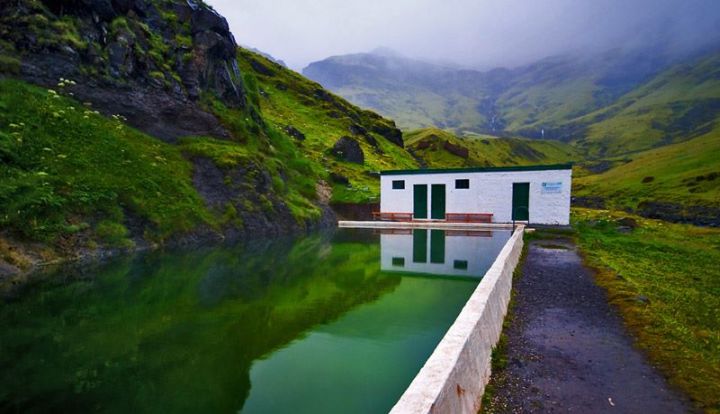
You can find it on the map between Skogar and Seljalandfoss, on a valley with many small waterfalls and right under the famous Eyjafjallajökull volcano. The best time to swim inside (since the water is not very warm) is between May and September when the sun is a bit more powerful.
#7. Finding the hidden Gljúfrabúi Waterfall
The hidden waterfall called Gljúfrabúi (or “Canyon dweller”) is the neighbour of the popular Seljalandsfoss waterfall, so it should not be very difficult to head there first. Once you have taken the right turn from route 1 to Seljalandsfoss and the majestic waterfall appears on your right side, keep driving forward. Gljúfrabúi is the next waterfall on the right, you can not miss it.
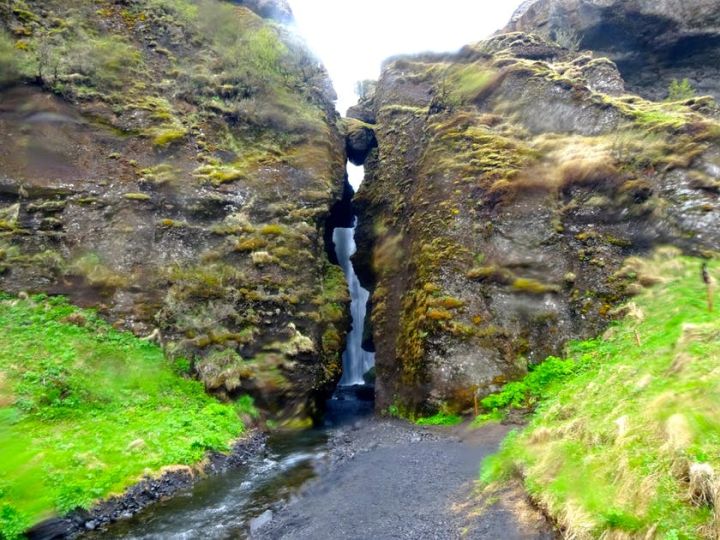
Gljúfrabúi is 40 meters high and partially hidden behind a large cliff which gives it a mystical aura. It can be seen in all it’s splendor by passing through the small river into a narrow opening in the cliff or by climbing a steep path up the cliff. Make sure you wear waterproof clothes and boots.
#8. Glacier walk on Solheimajokul Glacier
The glacier walk on Sólheimajökull glacier in southern Iceland is something you should not miss during your odyssey through the surreal land of Iceland. Sólheimajökull is an outlet glacier of Mýrdalsjökull, one of the biggest glaciers in Europe. The ice cap is the hat of the Katla volcano, one of the largest and most active volcanoes in Iceland.
The tour is accessible to anyone willing to step out of their comfort zone and it is fairly easy. During the entire time of the glacier hike, you will be accompanied and advised by a knowledgeable guide. So no worries about anything, you are on good hands.

The meeting point is at the Sólheimajökull parking lot, the place where you will receive the safety gear (harness, ice axe, carabiners, crampons) and the basic instructions about their use. For an extra fee, you can also rent a pair of professional hiking shoes. Before reaching the glacier, there is a 30 minutes walk to warm your body and share stories with the other people from the group.
To get to Sólheimajökull glacier from Reykjavík (160 km), drive towards east on Road 1 until you reach road 221 Sólheimajökulsvegur. Then turn left and follow that road until you reach the parking lot at Sólheimajökull. For the glacier walk we highly recommend the guys from Tröll Expeditions.
Minimum age: 10 years
Price per person: around 82 euros
#9. Tandem paragliding over the beautiful village of Vik
The tiny town of Vik i Myrdal is considered the best and safest place in Iceland by the paragliding community. Vik is surrounded by impressive mountains and hills, black beaches, the trembling ocean and an impressive variety of birds.
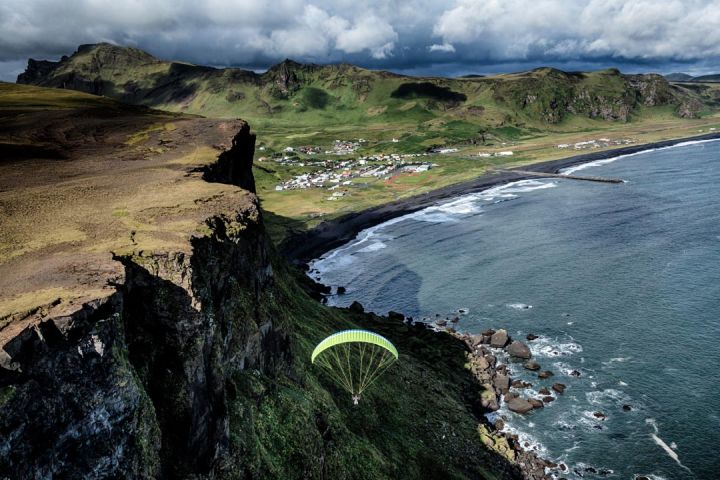
So pack your courage under a thick coat and go for a paragliding tandem flight! The tour will take you high above Vik and you will be able to experience a bird’s eye view of the region.
Availability: May to September
Duration: 10-15 mins on average for the flight, but allow about 1-2 hrs for the whole tour
Meeting point: True Adventure Paragliding, Suðurvíkurvegur 5, Vík í Mýrdal, South Iceland
Included: All flying equipment, pickup from meeting point, safety instructions
Price: 290 euros
For more information and booking, contact the team at True Adventure.
#10. Ice cave tour at Jokulsarlon Glacier Lagoon
The ice cave tour in Jokulsarlon will allow you to explore the hidden chambers near Vatnajökull glacier, the largest glacier in Europe. So prepare yourself for a journey inside the multi-colored beauty of ice.
The ice caves are rare phenomena that form naturally and last a short period of time. Each fall, after the melted water of spring has begun to freeze, local guides start to hunt for new ice caves and safe itineraries for tours. This is the reason why the location of the caves changes every year and every ice cave is unique and newly formed! The best time to attend a cave tour is in the low season between October and March.
Prices start at 200 euros and you will find more information and booking options here.
Transportation in Iceland
When in Iceland, there are several Icelandic buses that travel on the main road around the country. For remote areas, there are various tours available or you can rent a 4X4 to visit some Iceland highlights on your own.
Hiring a campervan in Iceland can make a difference. There will be fewer decisions to make, like where to stay and what to eat, and more time to experience and enjoy. And there’s just the easy access to transportation when it’s time to move and spend the night elsewhere.
You now know where to go, what to do, and how to get there and around the South Coast of Iceland. Your experience in the country of fire and ice should now be a lot easier to plan. Enjoy ‘Planet Iceland’ and let us know what complementary gems you would add on your South Coast list.

